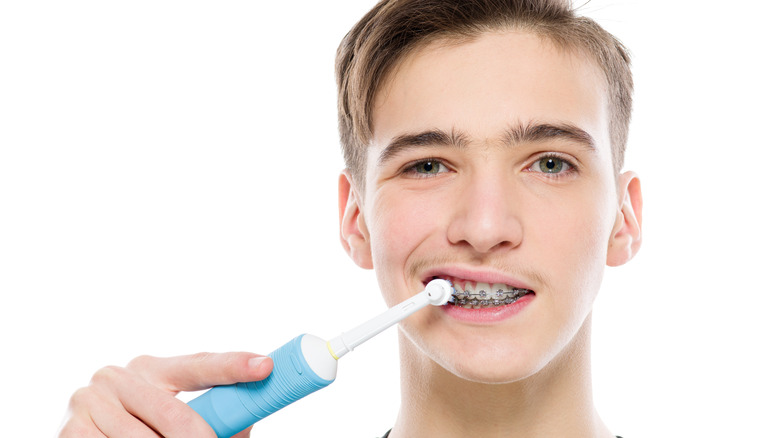Oral hygiene technology has come a long way over the years. The modern manual toothbrush was invented nearly 250 years ago, in 1780 by William Addis, as per Smile Concepts Dentistry. However, it would take until around the 1950s before toothbrushes began being manufactured with soft, nylon bristles and plastic handles — the classic manual brush that fills oral hygiene shopping aisles today.
Dr. Silman Smile Spa explains that manual toothbrushes are solely manipulated by the user, meaning they aren’t powered by electricity or batteries. The user moves the bristled head across the teeth and gums to clean them. On the other hand, electric toothbrushes are exactly what they sound like — they typically contain a rechargeable battery that serves to agitate the bristled head as the user moves the brush throughout the mouth.
As long as they are used correctly, the American Dental Association (ADA) states that either a manual or electric toothbrush can adequately get the job done and effectively remove plaque while reducing gingivitis. For most people, the decision to use one or the other comes down to personal preference, as well as finances (electric toothbrushes require a more costly up-front investment). However, does this apply to those who wear braces as well, or is one better than the other in this case? Here’s what we know.
Proper brushing is essential for braces wearers

Anyone wearing braces will need to be extra diligent about making sure their teeth get properly cleaned, Szymanowski Orthodontics points out. The contraption can make it more likely for bits of food to get stuck within the brackets and in between teeth, which can lead to tooth decay and gum disease, among other oral issues. To this end, while both manual and electric toothbrushes allow braces wearers to clean their teeth, electric ones are superior for a few reasons.
The vibration intensity that comes with an electric toothbrush allows for a better cleaning of the teeth, gums, and braces while serving a wide range of orthodontic materials, including metal and ceramic. Electric toothbrushes also include a timer and automatically shut off after two full minutes have passed, ensuring that the user brushes for an adequate amount of time. Finally, for anyone with dexterity issues, electric toothbrushes can get into those hard-to-reach places and thoroughly clean them without any effort on the part of the user.
Regardless of which toothbrush you choose to go with, Moles & Ferri Orthodontic Specialists explain that braces wearers need to take particular care with how they brush their teeth. For starters, the brush head should be placed above the brackets at an angle while brushing and then shifted below the brackets for another round. Additionally, it can be helpful to use a specialized proxy brush to clean under the archwire between the brackets.